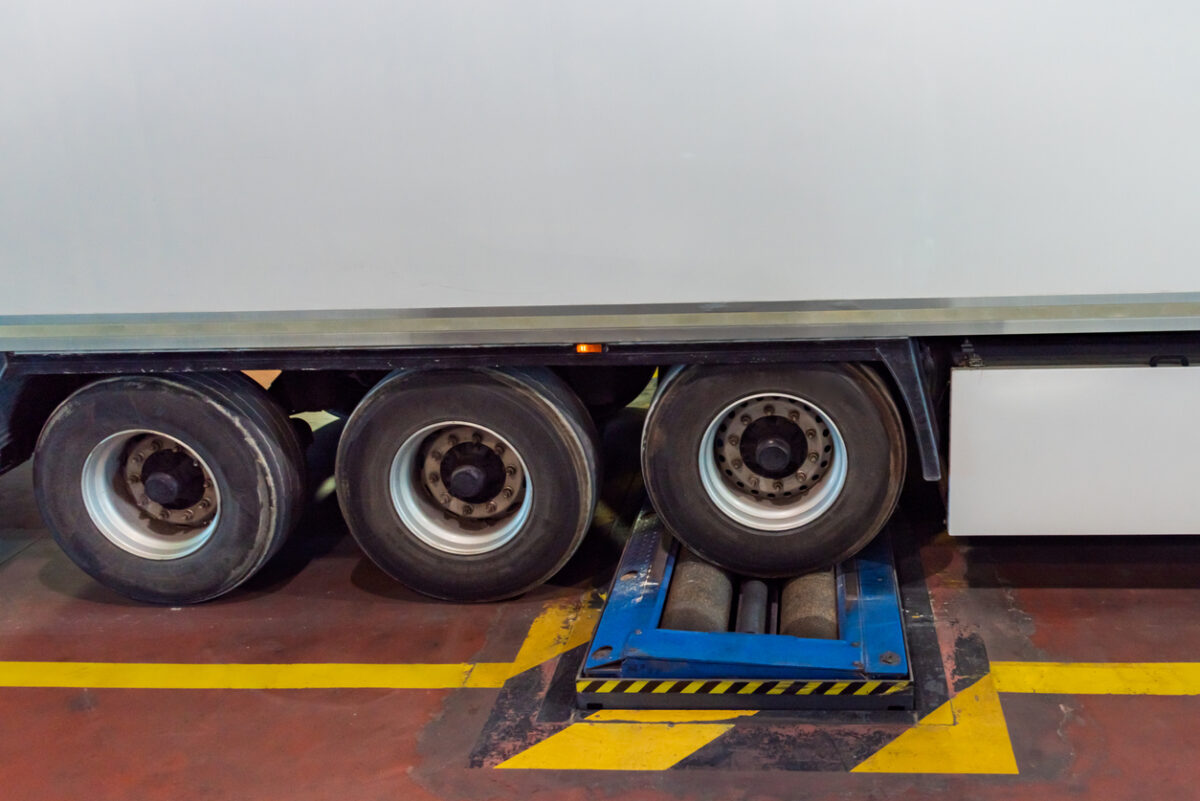Commercial truckers should be ready for inspections when approaching a weigh station or scales to guarantee compliance with weight limits and various safety standards. If a vehicle is found to have violated or violates any roadside inspection conducted by an officer, the vehicle will be put out of service (OOS).
Certain critical vehicle inspection items meet the criteria for an out-of-service order. The top five vehicle OOS violations are:
- Brake systems (25.2%)
- Tires (19.3%)
- Defective service brakes (14.1%)
- Cargo securement (12.4%)
- Lights (11.5%)
Preventive Vehicle Maintenance
To avoid OOS violations, preventive vehicle maintenance should take place regularly as well as in response to daily vehicle inspection observations. Following is a list of items to inspect to avoid OOS violations:
Weight Compliance: Ensure that the truck’s entire weight, including the load, is under the permissible limit.
Axle Weight Distribution: Ensure that the weight distribution across axles meets standards. Uneven weight distribution can overload individual axles, posing safety and road damage risks.
Proper Permits and Documents: Make sure all necessary permits, licenses, and documents are readily available for examination, including the vehicle’s registration, proof of liability insurance, and any special permits for large or overweight loads.
Operational Lights and Signals: Check that all lights and signals on the truck are working, including brake lights, turn signals, headlights, and any other necessary lighting.
Brake System Functionality: Check that the truck’s brake system is in good working order, including adequate brake adjustment, no air leaks, and overall system functionality.
Suspension Systems: Inspect for wear and tear on a regular basis and rectify any concerns as soon as possible.
Tire Inspection: Inspect the tires for correct pressure, tread depth, and obvious damage. Defective or underinflated tires might pose safety risks.
Hazmat Compliance: When carrying hazardous products, follow hazmat standards. This involves adequate labeling, placarding, and adherence to safety standards.
Load Securement: Ensure cargo is properly secured and complies with load securement rules.
Emergency Equipment: Make sure the truck has the necessary emergency equipment, such as reflective triangles, a fire extinguisher, and other safety gear.
Exhaust Emissions Compliance: Some areas, such as California, have emissions limits for commercial vehicles. Be sure you remain compliant with any changes. For example, in January 2023, a new California legislation required practically all trucks and buses to have engines from the 2010 model year or later.
Overall Vehicle Condition: Inspect the truck’s overall condition, including cleanliness and look. This can affect how extensively it is inspected.
Regular and thorough pre-trip inspections and routine maintenance are critical for detecting and rectifying potential OOS breaches. Furthermore, staying up to date on current rules and ensuring drivers are thoroughly trained in equipment checks help to improve overall safety and compliance.
About Western Truck Insurance Services
Western Truck Insurance Services is an insurance brokerage specializing in commercial truck insurance. We know this stuff and want to make sure you do, too. Our clients appreciate our dedication to finding competitive rates and offering unparalleled service beyond excellent insurance options. They also value how our state-of-the-art automation provides lightning-fast truck insurance quotes, customer service, insurance certificates, and coverage changes. Contact us today at (800) 937-8785 to learn more.

